Back to Blog
The Generative AI Playbook: Fueling Enterprise Innovation and Productivity
Generative AI has captivated the world with its ability to create new content—from lifelike

Generative AI has captivated the world with its ability to create new content—from lifelike images and compelling text to complex code and synthetic data. While much of the public conversation has focused on consumer applications, the true, long-term impact of GenAI will be felt profoundly in the en
terprise.
For businesses, Generative AI is not a gimmick; it's a powerful tool for fueling innovation and dramatically increasing productivity. It can automate creative and knowledge-based tasks that were previously impossible to automate, unlocking new opportunities for efficiency and growth. Think of a marketing team that can generate personalized ad copy at scale, a software team that can accelerate development cycles by auto-completing code, or an R&D team that can prototype new products in a fraction of the time.
This technology is poised to redefine how we work. However, successfully integrating it requires more than simply subscribing to a new tool. It demands a strategic approach to identify high-impact use cases, establish robust governance, and prepare your workforce for this new era of human-AI collaboration.
This playbook will serve as your guide. We will move beyond the hype to provide a clear, practical framework for how your enterprise can harness the power of Generative AI to stay competitive, drive innovation, and boost productivity across every department.
Beyond the Hype: GenAI's Role in the Enterprise
While consumer-facing Generative AI tools have grabbed headlines, their enterprise counterparts offer far more strategic value. Unlike analytical AI, which interprets existing data, Generative AI creates entirely new data and content. This fundamental difference unlocks unprecedented opportunities for:
- Accelerated Content Creation: Rapidly produce marketing materials, reports, and internal communications.
- Enhanced Research & Development: Generate new product designs, drug compounds, or engineering solutions.
- Optimized Software Development: Automate code generation, testing, and documentation.
- Personalized Experiences at Scale: Craft highly individualized customer interactions and product recommendations.
The focus in the enterprise is not just on what GenAI can create, but how that creation can directly improve business outcomes.
The Core Capabilities of Generative AI
At its heart, Generative AI models, such as Large Language Models (LLMs) and diffusion models, learn from vast datasets to understand patterns and then apply that understanding to generate novel outputs. Key capabilities include:
- Text Generation: Crafting articles, emails, reports, summaries, and marketing copy.
- Code Generation: Writing, debugging, and explaining programming code in various languages.
- Image & Video Generation: Producing unique visual assets for marketing, product design, or virtual environments.
- Data Synthesis: Creating realistic synthetic datasets for testing, privacy-preserving analytics, or model training.
These capabilities are transforming industries by automating the "first draft" or even the final version of many tasks.
Strategic Applications: Where GenAI Drives Value

The practical applications of Generative AI in the enterprise are vast and growing:
1. Marketing & Sales:
- Generating personalized email campaigns and social media content.
- Creating unique ad creatives and product descriptions in minutes.
- Developing dynamic sales scripts and customer service responses.
2. Software Development:
- Accelerating coding with intelligent auto-completion and code generation from natural language prompts.
- Automating unit test generation and documentation.
- Facilitating rapid prototyping and proof-of-concept creation.
3. Product Design & R&D:
- Generating multiple design iterations for products, packaging, or architecture.
- Simulating complex scenarios and creating synthetic data for testing new concepts.
- Assisting in drug discovery by proposing novel molecular structures.
4. Operations & Knowledge Management:
- Summarizing lengthy internal documents, reports, and meetings.
- Creating tailored training materials and onboarding guides.
- Automating report generation and data synthesis for analysis.
Navigating the Implementation Landscape
Successfully deploying Generative AI in the enterprise requires a thoughtful approach:
- Identify High-Value Use Cases: Don't chase every trend. Focus on areas where GenAI can solve a specific, impactful business problem or significantly boost productivity.
- Establish Robust Governance: Address ethical concerns, data privacy, intellectual property, and compliance requirements from the outset. Define clear guidelines for content creation and review.
- Data Strategy: Understand how your proprietary data can be used to fine-tune models, ensuring outputs are relevant and accurate for your business context.
- Upskill Your Workforce: Train employees on how to effectively use and prompt GenAI tools. Emphasize human oversight and collaboration to maximize value.
- Start Small, Scale Smart: Begin with pilot projects that demonstrate clear ROI, then expand strategically across the organization.
Conclusion: Unleashing Your Enterprise's Creative Potential
Generative AI is not just a technological advancement; it's a paradigm shift that empowers enterprises to innovate faster, operate more efficiently, and engage customers in entirely new ways. By moving beyond the initial hype and adopting a strategic, responsible approach, businesses can unlock their creative potential, automate knowledge work, and build a competitive edge that will define the next era of growth. The playbook for the future is being written, and Generative AI is a key chapter.
In this article




